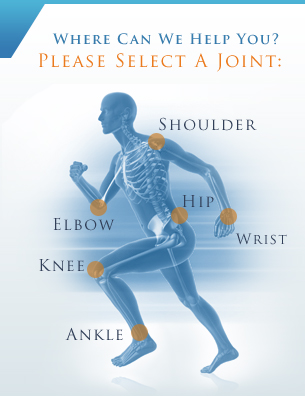
Knee Arthroscopy
|
|
Treatment of Chondral (Cartilage) Lesions
 A common type of knee injury is damage to the articular cartilage, the smooth substance that covers the ends of the bones and keeps them from rubbing together as you move. Cartilage, or chondral, damage is known as a lesion and can range from a soft spot on the cartilage (Grade I lesion) or a small tear in the top layer to an extensive tear that extends all the way to the bone (Grade IV or "full-thickness" lesion). Sometimes a piece of cartilage breaks off and causes more damage to the cartilage and bone as it is ground in the joint. Common chondral lesions in the knee are:
A common type of knee injury is damage to the articular cartilage, the smooth substance that covers the ends of the bones and keeps them from rubbing together as you move. Cartilage, or chondral, damage is known as a lesion and can range from a soft spot on the cartilage (Grade I lesion) or a small tear in the top layer to an extensive tear that extends all the way to the bone (Grade IV or "full-thickness" lesion). Sometimes a piece of cartilage breaks off and causes more damage to the cartilage and bone as it is ground in the joint. Common chondral lesions in the knee are:
- Chondromalacia / Degenerative Chondrosis (Cartilage tears away unevenly, with shallow walls)
- Osteochondritis Dissecans / Osteochondral Fracture (Cartilage breaks away with a piece of the bone)
- Chondral Flap (Cartilage separates from the bone and moves like a door with a hinge at one end)
- Chondral Fracture (Cartilage separates from the bone and floats free)
Chondral lesions may be degenerative (a "wear and tear" problem) or traumatic (caused by an injury such as falling on the knee, jumping down, or rapidly changing direction while playing a sport). They do not always produce symptoms at first because there are no nerves in the cartilage. Over time, however, lesions can disrupt normal joint function and lead to pain, inflammation and limited mobility. The lesion may gradually worsen or cause other problems in the joint.
Cartilage also lacks blood supply, so the body cannot usually repair chondral lesions on its own. However, some severe tears that injure the bone can promote the growth of scar tissue known as fibrocartilage, a tough material that replaces the missing articular cartilage but does not provide as smooth a gliding surface.
Knee Arthroscopy
Knee arthroscopy is a minimally invasive procedure that allows doctors to examine tissues inside the knee. It is often performed to confirm a diagnosis made after a physical examination and other imaging tests such as an MRI, a CT scan or X-rays.
During knee arthroscopy, a thin fiberoptic light, magnifying lens and tiny television camera are inserted into the knee, allowing your doctor to examine the joint in great detail.
For some patients, it is then possible to treat the problem using a few additional instruments inserted through small incisions around the joint. Sports injuries are often repairable with arthroscopy. Knee injuries that are frequently treated using arthroscopic techniques include meniscal tears, mild arthritis, loose bone or cartilage, ACL and PCL tears, synovitis (swelling of the joint lining) and patellar (knee cap) misalignment.
Because it is minimally invasive, knee arthroscopy offers many benefits to the patient over traditional surgery. These include:
- No cutting of muscles or tendons
- Less bleeding during surgery
- Less scarring
- Smaller incisions
- Faster recovery and return to regular activities
- Faster and more comfortable rehabilitation
Knee arthroscopy is not appropriate for every patient. Your doctor will discuss which options are best for you.
Knee Osteoarthritis Treatment
 Osteoarthritis, also known as wear-and-tear or degenerative arthritis, is the most common form of the disease, affecting millions of people in the US each year. This condition is most common in older patients whose cartilage has worn down over time, and in athletes who have worn down their cartilage from overuse and repetitive motions.
Osteoarthritis, also known as wear-and-tear or degenerative arthritis, is the most common form of the disease, affecting millions of people in the US each year. This condition is most common in older patients whose cartilage has worn down over time, and in athletes who have worn down their cartilage from overuse and repetitive motions.
Patients with osteoarthritis may experience pain, swelling and stiffness within the joint, which tend to worsen as the condition progresses. Your doctor can diagnose this condition after evaluating your symptoms and performing an X-ray examination of the knee. Several other factors should be taken into consideration when diagnosing osteoarthritis, including evaluation of the patient's spine, nearby joints, posture and gait.
Treatment for osteoarthritis initially focuses on relieving pain and other symptoms, and may include rest, physical therapy, bracing and anti-inflammatory medication. More severe cases of osteoarthritis may require surgery to reposition the bones or replace the joint. Most procedures can be performed through arthroscopy, which significantly reduces bleeding, scarring and recovery times.









